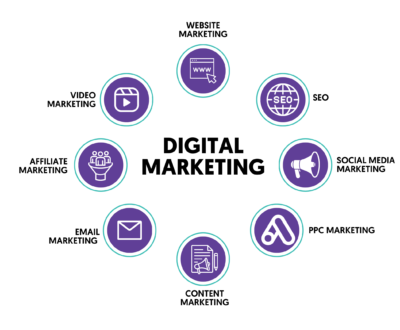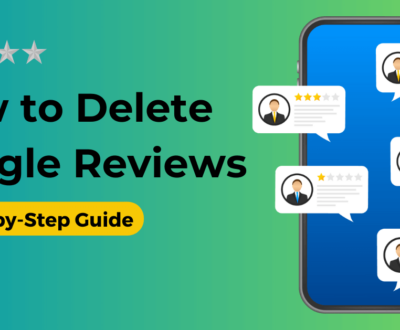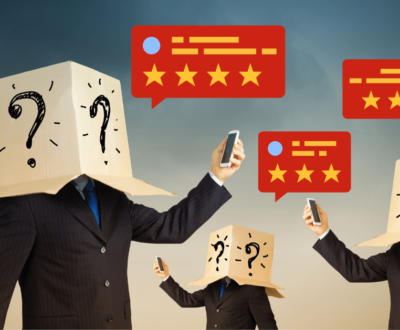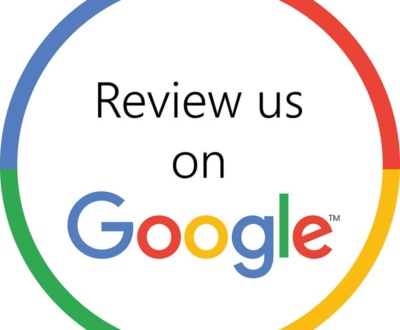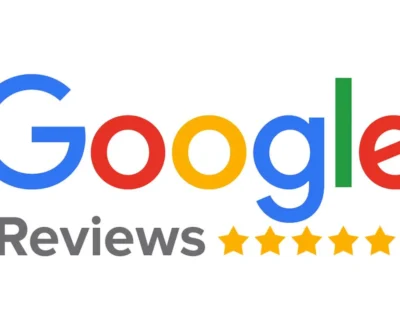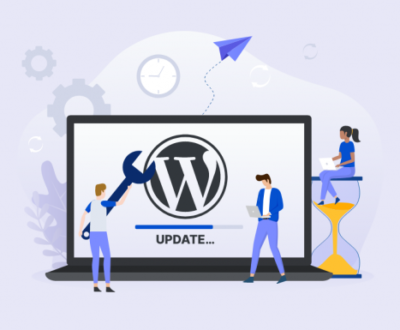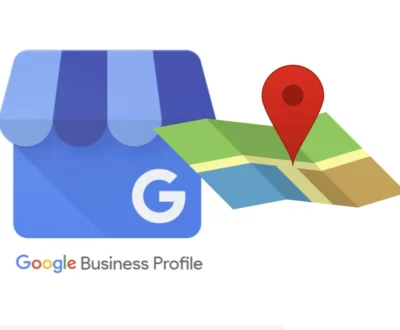How To Increase Sales Revenue
- November 25, 2022
- Business Management, Inbound Sales, Lead Generation, Outbound Sales, Sales
Through this blog, we will discuss the how to increase sales revenue in your business.
Majority of businesses we work with want to increase the amount of sales their business makes in turn either increasing the revenue or profit, hopefully both.
We generally focus on 3 key points at the serials seller and an order that works for our clients. Focus firstly on sales, secondly profit and then efficiency.
With that being said, lets work through how to increase sales revenue for your business.
This can be broken down in to two specific categories;
1. Business
2. Sales & Marketing

Business Strategies
As the owner of a business you have one job, keep the company alive. The best owners get this and know it’s no small task. The problem is too many of us make it way too difficult. We thrash about pulling levers and making changes. We leverage data (if we’re lucky), and work to do accounting, billing, operations, IT, HR and then sales by adding to the pipeline, to creating new collateral, to driving leads, to increasing up sells, training the team, to improving close dates, to adding new logos and more. We are obsessed with finding the next big “thing” that will take our organization to the next level.
Here’s the deal, growing the sales team, adding new logos, increasing top of the funnel activity, leveraging inside sales, new marketing campaigns, etc. can add to an increase in sales revenue, but they aren’t the sure fire way to get you over the top. The key to increasing revenue and blowing up your sales organization is aligning 4 critical areas; strategy, structure, people and process. Without having specific, measurable objectives and tactics across all four of these areas, your sales revenue is not optimized for scaling revenue.
Strategy
It all starts with a clear, powerful sales strategy. What’s your 2023 sales strategy? How are you going to market? What market opportunities or weaknesses are you going to exploit? What competitors are you going to take out? What new markets are you going to penetrate? What industry changes are you going to leverage, etc.? Starting with a killer strategy is key. Having the wrong strategy or worse yet no strategy can be devastating.
Before you look to do anything, make sure you have a clear sales strategy that aligns with your revenue goals. It’s extremely difficult to grow revenue without a strategy, yes there are a lot of initiatives that can move the needle, but a clear, well thought out strategy is at the core to increasing revenue. Take the time to evaluate your surrounding? Where do you see areas to exploit? What opportunities are presenting themselves? Where are there latent revenue generating windows? Where is the competition failing? What is the current customer base doing? What market dynamics have changed? Look deep, inside and outside of the company for opportunities to build a killer strategy — it’s key to growing revenue.
We can help with this by building out your ideal target profile and working backwards. Who is your best client? What do they buy from you? How do you help them?
Use that information to then identify the market opportunity and create your content based off the ideal persona and the market opportunity.
If you need assistance with that, check out our services.
Structure
Structure is the framework that holds up strategy. It’s the core to executing on strategy. Structure makes sure you have the right pieces in place. Without a solid structure your strategy is dead in the water. The key is to make sure your structure supports your strategic efforts. Does your strategy require inside or outside sales? Does it require hunters or farmers. Does it require content and new web support? Does it require alternative compensation plans? Does it require new territories? What does your strategy require to be successful? Your structure needs to answer those questions and make sure the answer delivers for the strategy. Structure includes sales operations and sales enablement as well. It’s all the things that enable your strategy to take flight.
At The Serial Seller, we can provide the strategy and structure guidelines to help you through these steps.
People
People: the most important aspect of driving revenue and often the most forgotten. This is the biggest problem most sales organizations face. If you don’t have the right people in the right roles nothing gets done. People are the core to execution. Making sure you have the right people in the right roles is critical. If the people part isn’t correct, nothing else matters.
Take a look at your team. Do you have the right people in the right roles? Does the team have the right skill sets. Do they have the necessary knowledge? Is the team performing at the level required to be successful? Can you prove your conclusions? Do you have the data? Can measure the strength of your team in relationship to your strategies. Do you even know what skill sets are required to be successful in each of the roles in your organization? Have you catalogued the key traits and skills required by your team to crush it? Have you measured each and every member on the team against these skills and traits?
The people part is the most important AND the most difficult to get right. People are unpredictable. Making sure you have the people part right is at the heart of increasing revenue. Make sure your plan has a people element that makes sure you have the right people in the right roles, that they align with the strategy and are motivated and to get things done.
At The Serial Seller, we have templates to help target specific candidates and can introduce you to HR partners to assist you with finding the right people.
Process
To make sure everything is running smoothly, to ensure velocity and efficiency and to avoid wasting time and effort killer processes have to be in place. Bad process is like throwing a monkey wrench into the gears. Poor process can impede time to market and execution and slow things down. When processes aren’t working correctly or they don’t exist, the ability to achieve the goals is severely hampered.
Take a good look at your processes. Do they enhance the selling process or hurt it? What does your sales process look like? Does it accelerate the sale? Does it include the customer’s buying process? What is your team development process? What about you pipeline meeting process, your coaching process, lead development process, your win/loss assessment process, your on boarding process, your hiring process, etc. Do you have the right processes in place to ensure that you can deliver?
Implementing light, functional, effective processes is like supercharging your car. It makes everything go BOOM! Take a look at all your processes and make sure they improve your teams ability to sell. Make sure they align with the strategy and structure as well as empower the people.
Conclusion to Business Strategies
Growing revenue is more than just a handful of efforts, but rather a targeted, precise, aligned set of objectives across these four areas. If a sales organization isn’t delivering you will find the problem in one of these areas; the strategy isn’t sound, the structure doesn’t support the strategy, the wrong people are in the wrong roles or the right processes aren’t in place. When all or any of these four are out of whack, then driving revenue is almost impossible and you can kiss growing revenue goodbye.
If growing revenue is part of your mandate, which it is, then break your organization into these key elements, strategy, structure, people and process and ask yourself how well you’re doing across each. I promise you, you’ll learn more than you were prepared for and that’s a good thing.
Sales & Marketing Strategies to Improve Sales Revenue
Part of the problem is that there are many different factors that can affect the answer: the business type, size, industry, and especially, the target customers among others.
Although there can be many different tactics and strategies to increase revenue, actually there can be boiled down to just four different ways:
- Raise your product/service prices: arguably requires the least efforts, but can backfire if you are not careful
- Have more customers: new customer acquisitions will obviously translate to more revenue
- Optimize the average transaction size for each customer: in short, increasing the customer Lifetime Value (LTV)
- Encouraging your customers to buy more often from you: again, increasing LTV
So, for the rest of this, we will break down each of these methods, and the actionable tactics for each of them. Let us begin with the first one.
Higher Product Price
Raising product/service price will translate to more revenue from each purchase transaction. Yet, your overall revenue will only increase when your sales volume, sales frequency, and transaction size remain the same, or even better, increase.
This is where the main dilemma lies: it is a common occurrence that when we increase our price, customers are now more reluctant about making a purchase, and so lowering the sales volume and frequency. So, how can we effectively raise our prices without losing volume, or worse, customers? Here are some key tactics to consider:
Tell Your Reason(s) To Increase Price
In general, you shouldn’t raise your price randomly and just hope for the best. You should have a clear reason to raise your prices, and communicate it well with your customers and prospects.
This tactic works best especially when rising costs is your main reason. Yet, it can backfire if you are lying about the rising cost and when your competitors are not rising their prices. Make sure to do enough competitive analysis before using this approach. And avoid this tactic when you don’t have any clear reason besides increasing profit and revenue.
Optimizing Perceived Value
Remember that your customers are not essentially buying your product or service, but rather the benefits they get after the purchase. If in their minds, they can get more benefit from your product after the price increase, they can justify the purchase.
So, a great approach when implementing a price increase is to also increase the perceived value of your product. For example, if you are selling Software as a Service (SaaS) product, you can implement a price increase while also introducing a new feature. If you are selling T-shirts, you can release a new, limited-edition design that is more expensive than your usual product line.
The downside of this approach is that most likely, there will be a cost increase tied with the new feature you introduce. So, the key here is how you can find the delicate balance between minimizing the increase in cost and maximizing the increase in price.
Gradual Price Increase
Consider increasing your price gradually to minimize customers’ resistance. Yet, there is an obvious downside to this approach: you will be raising your prices more frequently.
Tied to the two previous tactics, it will be harder to explain your reasons to the customers with the frequency of the price increase.
A good way to implement this tactic is by also increasing the perceived value gradually with each price increase, which can translate to better cost management. For example, instead of developing and introducing a major feature in your software product, you can introduce smaller features that are cheaper to develop.
Multi-Tier Pricing
A common approach nowadays is to introduce “premium” products with higher prices besides our main product line. This way, customers who want a more affordable product can still have their options, while those who seek more value can opt for the premium ones.
Another advantage to this approach is the psychological phenomenon we know as price anchoring. A $3,000 tuxedo might seems expensive at first, but by putting it besides a $20,000 jacket, customers can perceive it as “cheap”. This is why we often buy a super-sized French fries for $8 instead of the regular size for $7.50. Hey, it’s only a 50 cents difference.
Bundling Products
By offering product bundles, you can offer an added value to your customers, where we can often charge a higher price compared to the sum of the individual prices of the products.
Another approach you can do is to offer the bundle at a discounted price compared to the individual product prices. This way, you can potentially attract more customers that will result in a higher overall revenue.
Acquiring More Customers
This method is fairly obvious: by bringing more people in the door, there will be a direct increase in revenue. Yet, there are two main issues with this method: acquiring new customers can be extremely difficult, especially if you are in a saturated industry. Also, new customer acquisitions can be very expensive, and we can end up losing money if we are not careful.
So, these two issues will be our focus here, and here are some tactics to consider:
The Right Mindset: Lead Generation, Nurturing, and Conversion
You can’t get a new customer if you don’t get a prospect first. Yet, not all prospects will convert into purchasing customers.
So, we should first understand that there are three different stages involved in a customer acquisition process: first, lead generation, where you acquire prospects. Lead nurturing, when you nurture the prospects until they are finally ready for a purchase. Last but not least, conversion-focused activities when you finally encourage the prospect for a purchase.
So, we should have the right mindset about our customer acquisition strategy: we should carefully plan the required tactics for each phase, optimize them, and maintain cost-efficiency.
Content Marketing
Content marketing is effective in all the three stages of customer acquisition discussed above. Most prospects are not looking for a product and/or service at first, but are generally looking for information and solutions for their problems. By publishing relevant content for their specific problems and needs, you can get their attention.
Content marketing is also an effective way to educate customers in the lead nurturing stage. You can communicate the benefits of your product, and the unique values compared to your competitors’. In the long run, content marketing is also effective in driving conversion.
An important thing to remember about content marketing is that content development is just one aspect of the whole process: no matter how good your content pieces are, they will be useless without visibility. This is where the importance of content promotion comes in, and SEO (link) is an especially powerful tactic to work hand-in-hand with content marketing.
Email Marketing
Even with all the newer, technically more advanced platforms and technologies, email is still one of, if not the best way to communicate promotional messages to customers. According to studies, email marketing still offers the highest of ROI of 4,400%, significantly higher than other marketing channels.
The main goal when using email marketing to acquire more customers is to increase both open rate and click-through rate. The idea is, the more people that open your emails and engage with them, the higher the chance to turn them into actual customers.
While there can be many different factors in achieving this, in general it’s all about targeting the right audience, with the correct messages, and delivering them at exactly the right time.
Fortunately, there are now many different tools that can assist you in this process, automating some of the arduous activities involved. You might want to check out our previous guide on drip marketing/automated email marketing here to help you further. (link)
Choosing The Right Acquisition Channels
Here is the deal: a marketing/acquisition channel that works for one business won’t necessarily work with the others. While there are many different methods, frameworks, and tactics to determine the right channel for your business, in the end it’s all about understanding your ideal customers combined with trial and error.
First, you should determine the clear goals of your marketing efforts, and in this case, the number of customers you want to acquire, and at what cost.Setting a clear, realistic goal will help you understand whether the channel is working as desired, or not. This way, you can test various channels and compare their individual results until you find the most effective one(s)
Conversion Rate Optimization
While there can be many factors affecting the conversion rate of prospects (the percentage of prospects who actually convert into purchasing customers), it is often caused by the fact that the business/website doesn’t make the conversion process as easy as possible for the prospects.
Conversion Rate Optimization, or CRO, is optimizing your site to encourage more conversions. In short, providing a clear, easy path for the prospects to convert. CRO is a fairly broad subject on its own, and you might want to check our previous guide on CRO here for more details (link). In general, however, here are the key principles of a successful CRO:
- Having an effective value proposition is extremely important. Without effectively communicating your core values, benefits, and messages, there is no reason to purchase your product
- A huge part of CRO is is the proper design, placement, and timing of Call to Action (CTA). Check out this examples by HubSpot as a source of inspiration
- Run various tests, especially A/B test on your pages
- Retargeting (link) is a very powerful and popular method to get more conversions. Use it to your advantage
Keep in mind that these are not the only available tactics to acquire more customers. You might want to check out these guides to help you further:
- Some customer acquisition tactics by Matthew Barby
- A beginner’s guide to lead generation by HubSpot
- A guide to lead nurturing by Pardot
- A huge aspect of acquiring new customers is maintaining the cost. Check out this article by Neil Patel on Customer Acquisition Cost (CAC)
Increasing Transaction Frequency
Here, your goal is to get each customer to purchase more often from you. Let’s say you are a restaurant business, and the average customer eats at your restaurant once every two weeks. In this scenario. convincing your customers to come each week will increase your revenue.
Obviously, this method will work better with certain products and services over the others: if you are selling an exclusive watch worth $10,000, it’s far tougher to increase purchase frequency compared to, say, a fast food restaurant selling $5 food.
Again, here are some tactics you can use in this method:
Customer Loyalty Discounts
It’s our basic psychology to like getting exclusive things. Offer special access to discounts, new product releases, or any special offers to your existing customer base before offering them to the general public. By using this “early-access” approach, you are also building a sense of urgency, encouraging your customers to purchase before the limited time expires.
A great customer loyalty program offering exclusive benefits is one of the most effective ways to encourage your customers to purchase more often.
Payment Flexibility and Installment
Above, we have mentioned that increasing transaction frequency can be difficult if you are selling expensive products, and this tactic can help tackle that issue. By offering easy and transparent financing options, you can give your customers more reason for repeated purchases. Also, due to the fact that many millennials are now ditching credit cards, offering transparent installments that do not involve credit card can be a huge plus for your business.
Email Marketing
In our previous point, we have also discussed how email marketing is still incredibly effective in communicating promotional messages. Here, you can use email marketing to send personalized offers based on the customer’s purchase history to effectively encourage another purchase.
A common approach is to offer complimentary products based on the items they recently purchase. For example, if you are an electronic e-commerce store and one customer recently bought a PlayStation 4, you might want to send them an email offering the latest games, accessories, or even an HDMI cable.
In this saturated marketplace, personalized marketing is one of the most effective approaches to get your voice heard, and email is one of the best platforms to deliver personalized messages.
Direct Mail and Cold Calling
These old but proven tactics are still effective today, if not more effective than ever. Nowadays, the average customers received so many promotional messages on a daily basis, and these direct approaches can help in reaching them more effectively.
For a direct mail, keep in mind that visual design is everything that matters. Your mail must be immediately eye-catching and engaging to draw their attention. Also, make sure your offers are interesting with clear and easy conversion path.
For cold calling, you might want to check out this guide by Marketing Growth & Hack on effective cold calling techniques.
Retargeting and Personalized On-Site Marketing
Retargeting (or remarketing) can be a very effective tactic to encourage existing customers to purchase more. Google AdWords and Facebook Ads, among other platforms, offer the ability to retarget those who have purchased your products in the past, and can show them a relevant, personalized ad based on their purchase.
Another common approach is to put a personalized message on the top of your site. Something like, “Nice seeing you again! Check out our special discounts for loyal customers”. You can even go with more personalization-heavy messages like “Welcome back! You just bought a baby stroller, check out our special offers for infant seats!”. This type of personalized messaging can effectively encourage returning customers to make another purchase, and regularly check your site.
You can also combine both approaches: retarget past visitors and customers to come back to your site, and then give them a personalized on-site messages.
Social Proof
Leveraging social proof can be extremely effective not only to encourage repeat purchases, but also to acquire new customers and increase your overall revenue. People are more likely to purchase from companies they can trust, and social proofs like testimonials, good reviews, and likes are simply the most effective ways to gain online credibility.
Encourage your existing customers to write good reviews. You can achieve this by offering an interesting incentive like discounts, free products, and so on. Also, reach out to influencers in your niche/industry. Build relationships with them, and get them to review your product.
Increasing The Average Transaction Size
Encouraging your customers to buy more often is not the only way to increase the generated revenue from a single customer, you can simply get them to purchase more in every single transaction.
There are two main approaches in achieving this feat. First, there’s upselling, which is essentially offering them more expensive products, add-ons, and upgrades.For example, if you are a SAAS business, you can upsell additional features, expansions, or even premium version of your software.
The second one is cross-selling, which is selling additional products or services that are often complementary to the ones they are already purchasing. For example, if you are a restaurant, you can offer desserts, entrees, or snacks after they purchased the main course.
Here are some key tactics you can consider:
It’s All About Understanding Your Audience
Effective upselling and cross-selling can only be done after you’ve truly understood your customers and prospects: their problems, needs, and goals. Analyze existing customers’ behavioral and demographic data, and determine their needs.
If necessary, you might want to develop new products or services to answer the customers’ needs and problems: when you are a company selling a marketing automation tool, and you know your customers are avid fan of cloud storage, why not develop your own cloud services?
So, do your homework of customer analysis, develop a buyer persona, and build detailed customer profiles. Only by then you can have the correct upselling and cross-selling approach.
Customer Segmentation
Not every single customer is ideal for upsell and cross-sell activities. Sometimes, they might be limited by budget, timeline, or any other factors. This is where the importance of identifying your most profitable customer segments comes in. Also, it is equally important to identify your least profitable segments, and decide whether it will be worth it to continue spending your resources on them.
You can segment by location, demographics, behavior, and many other factors depending on your industry, and determine the correct upsell and cross-sell approaches for each segment -or not to attempt any approach with certain segments-.
Be Realistic, Don’t Force It
Have you ever contacted a company asking them to solve a simple problem, but got endless offers of “limited opportunities” instead? Did it frustrate you? Well, don’t do the same to your customers. Upsell or cross-sell suggestions that are unrelated, unrealistic, and worse, completely out of line can cause you to lose customers.
Instead, your suggestions has to fit the customer’s exact needs and/or problems, and even better, when they are the ones expressing the desires. Look for important signals and ask the right questions like, “what features would you like added to our product?” or “how can we help you better?”.
The key here is to actively listen to their needs, issues, and goals.
Educate Them Through Your Content
Again, remember that people are not buying your product or service, but the benefits tied with them. No one is going to invest more money for more products until you have convinced them that the products will solve their problems, have tangible benefits, or will improve their quality of life.
Content marketing, again, will be an effective method to educate your customers in this aspect. Show your customers how the premium version of the product will perform, the benefits of getting additional features, your unique values, and so on.
The Serial Seller Summary
I hope that helps with your business and enables you to increase your sales revenue.
If you want some assistance and need a structured strategy, guideline and coaching to support you with this – Book a call with us now!
About us and this blog
We are a Full-Service Sales & Marketing provider that aims to help small to medium businesses increase their leads and sales while helping remove the business owners from their day-to-day activities so they can focus more on the long-term goals of their business.
Book a Meeting with us!
We offer Done-For-You Sales, Sales Coaching, and Advisory as well as Digital Marketing Services. If you want to increase the leads generated for your business and need some guidance and accountability, book a call with us now.
Subscribe to our newsletter!
More from our blog
See all postsRecent Posts
- How to Start Digital Marketing February 18, 2025
- How to Delete a Google Review February 17, 2025
- How to Leave an Anonymous Google Review February 11, 2025

